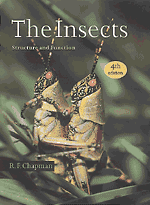Book contents
- Frontmatter
- Contents
- Preface
- Acknowledgments
- PART I The Head, Ingestion, Utilization and Distribution of Food
- PART II The Thorax and Locomotion
- PART III The Abdomen, Reproduction and Development
- 11 Abdomen
- 12 Reproductive system: male
- 13 Reproductive system: female
- 14 The egg and embryology
- 15 Postembryonic development
- PART IV The Integument, Gas Exchange and Homeostasis
- PART V Communication
- Taxonomic index
- Subject index
12 - Reproductive system: male
Published online by Cambridge University Press: 05 June 2012
- Frontmatter
- Contents
- Preface
- Acknowledgments
- PART I The Head, Ingestion, Utilization and Distribution of Food
- PART II The Thorax and Locomotion
- PART III The Abdomen, Reproduction and Development
- 11 Abdomen
- 12 Reproductive system: male
- 13 Reproductive system: female
- 14 The egg and embryology
- 15 Postembryonic development
- PART IV The Integument, Gas Exchange and Homeostasis
- PART V Communication
- Taxonomic index
- Subject index
Summary
ANATOMY OF THE INTERNAL REPRODUCTIVE ORGANS
The male reproductive organs typically consist of a pair of testes connecting with paired seminal vesicles and a median ejaculatory duct (Fig. 12.1). In most insects there are also a number of accessory glands which open into the vasa deferentia or the ejaculatory duct.
Testis The testes may lie above or below the gut in the abdomen and are often close to the midline. Usually each testis consists of a series of testis tubes or follicles ranging in number from one in Coleoptera Adephaga to over 100 in grasshoppers (Acrididae). Sometimes, as in Lepidoptera, the follicles are incompletely separated from each other (Fig. 12.2c), and the testes of Diptera consist of simple, undivided sacs, which may be regarded as single follicles. Sometimes the follicles are grouped together into several separate lobes (Fig. 12.1b). In the cerambycid, Prionoplus, for example, each testis comprises 12 to 15 lobes each with 15 follicles. The testes of Apterygota are often undivided sacs, but it is not certain in this case that they are strictly comparable with the gonads of other insects since the germarium occupies a lateral position in the testis instead of being terminal.
The wall of a follicle is a thin epithelium, sometimes consisting of two layers of cells, standing on a basal lamina. The follicles are bound together by a peritoneal sheath and if the two testes are close to each other they may be bound together.
- Type
- Chapter
- Information
- The InsectsStructure and Function, pp. 268 - 294Publisher: Cambridge University PressPrint publication year: 1998
- 4
- Cited by



